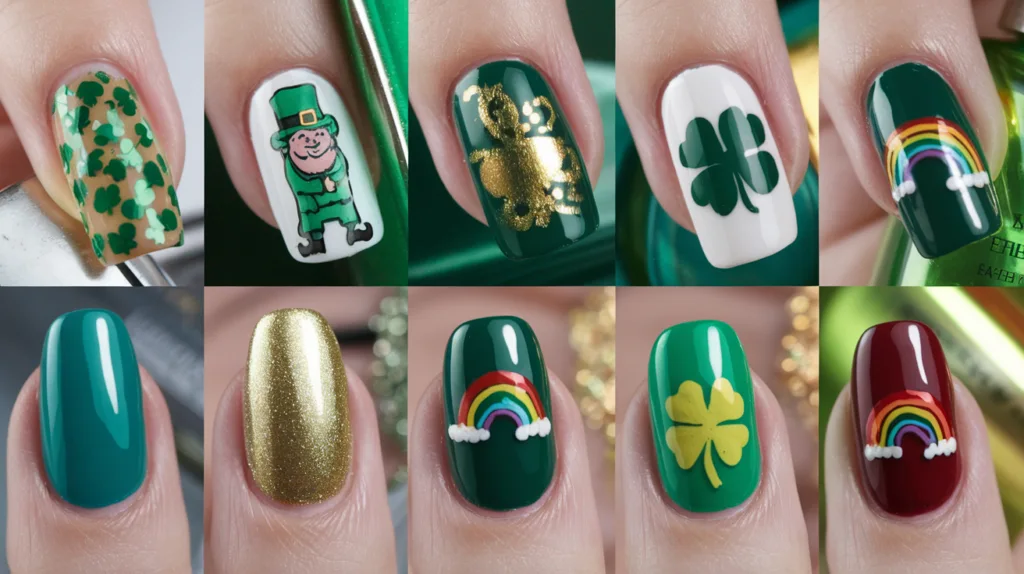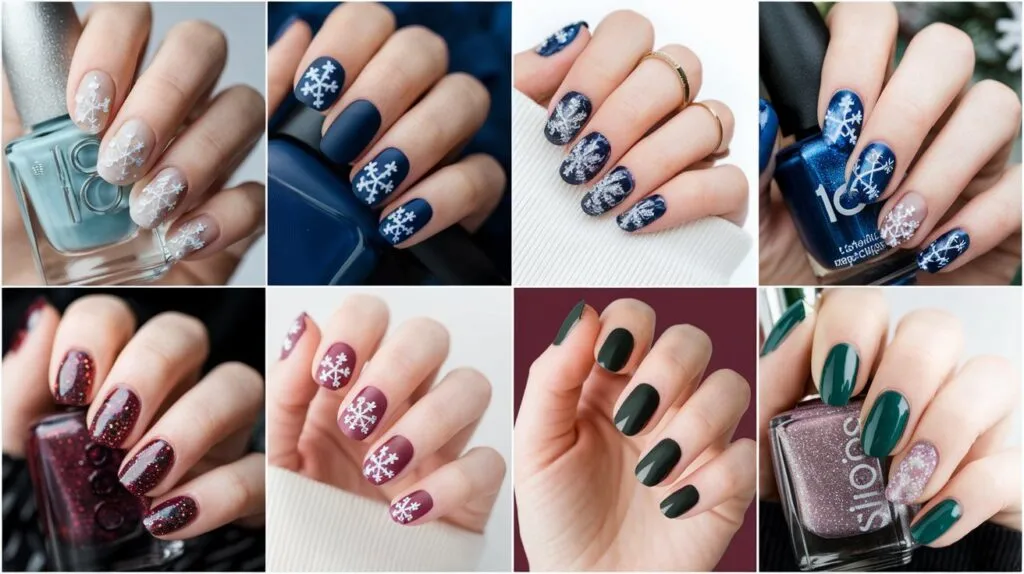Nail tech tips and expert advice are critical in a booming industry. In 2018 alone, Americans spent over $8.36 billion on nail salon services. With the nail technician job market projected to grow 13% by 2026—far outpacing other careers—the demand for skilled professionals has never been higher. Florida, a hub for nail techs, leads the nation in employment rates, proving there’s room to thrive. But success requires more than passion.
Mastery starts with basics. Nail technician advice often stresses foundational skills like the three-bead method, which 100% of pros agree reduces errors. As the industry expands, staying ahead means balancing creativity with business savvy. Whether mastering techniques or navigating trends, these secrets can turn ambition into a thriving career. The stakes are high: 80% of techs credit ongoing education for their success. Let’s uncover how to shine in this billion-dollar field.
Importance of Nail Care for Clients
Healthy nails form the base of any stunning manicure. Manicurist secrets begin with assessing each client’s unique needs. Skilled technicians spot issues like weak nails or ridges early, guiding personalized care plans. For instance, avoiding water-soaked nails before services ensures polish stays chip-free longer. Gentle cuticle pushing—not cutting—prevents infections and irritation.
Nail care hacks like daily cuticle oil use and moisturizing hands combat dryness. Experts advise clients to wear gloves during cleaning to shield nails from harsh chemicals. A diet rich in biotin and vitamin E fuels stronger nails naturally. Sharing these tips positions you as a trusted advisor, not just a service provider.
Regular manicures help spot health clues—like discoloration signaling fungal issues. By teaching clients proper at-home routines, you build lasting relationships. Empower them with knowledge: shorter nails may last longer than overly long ones, and symmetry matters as much as length. Every consultation becomes a chance to educate and inspire confidence.
Essential Tools Every Nail Technician Should Have
Every nail technician’s success starts with the right tools. Nail industry tips emphasize investing in quality equipment to boost precision and client trust. Begin with a nail training hand for practice, ensuring skills stay sharp. Electric files (e-files) and drill bits streamline tasks like shaping acrylics, saving time and effort. UV/LED lamps are vital for curing gel polishes, with top-tier models offering fast, even results. For color variety, stock classic neutrals and bold shades—specialty gels like magnetic or temperature-changing polishes add unique appeal.
Sanitation tools like UV sterilizers and disinfectants are non-negotiable. Ethyl methacrylate-based products and cuticle oils promote client comfort and health. Professional nail tips include organizing supplies with labeled shelves and dappen dishes. Brushes, buffers, and clippers form the core of any toolkit. High-quality manicure tables and pedicure chairs with massage features enhance client comfort, while apps like GlossGenius simplify scheduling.
Pro tip: Diversify your collection with acrylic dip powder and acrylic tips in varied shapes. Nail art brushes and glitters let you create standout designs. Dorsey College programs stress tool durability and hygiene, aligning with professional nail tips for long-term success. Regular maintenance of tools ensures consistent quality, boosting both efficiency and client satisfaction.
Mastering Nail Prep Techniques
Every flawless manicure starts with precise preparation. Nail artist tricks like removing oils with alcohol pads and buffing with 180-240 grit files create a flawless base. Proper prep ensures primers adhere perfectly, extending acrylic wear up to two weeks. These foundational steps are where artistry begins.
Filing direction matters most. Shape nails by following the natural curve, using a single motion to avoid ridges. For square tips, angle files parallel to the free edge. Nail tech tips include testing grit on a small area first—over-filing weakens nails, risking breaks. Always stop when the surface feels smooth but not glossy.
Cuticle care prevents 80% of lifting issues. Gently push back with a wooden stick, never cut. Apply oil to moisturize but wipe excess to avoid residue. Nail tech tips recommend daily cuticle oil use to maintain the nail’s protective layer. Skipping this step risks peeling polish or lifting enhancements.
Pro techniques like dusting residue with a microfiber pad add polish to the process. Prioritize tools like dusting brushes to catch debris. These steps turn ordinary prep into a science—where every motion counts. Mastering them builds client trust and longevity of services.
Effective Communication with Clients
Building trust starts with understanding. Nail technician advice often highlights how open conversations shape client experiences. Ask questions about preferences, lifestyles, and past nail health concerns. For instance, “What styles inspire you?” or “Have you noticed any changes in your nails?” These questions guide personalized service choices. Active listening ensures technicians notice subtle cues—like a client pausing mid-service—to adjust approaches seamlessly.

Nail salon tips emphasize clarity and empathy. Explaining service steps clearly boosts satisfaction by 40%, while remembering small details—like a client’s favorite polish shade—can improve loyalty by 20%. Use positive language to address concerns, turning feedback into solutions. A cheerful greeting and consistent eye contact create instant rapport, vital for 90% of clients who prioritize comfort during visits.
Regular check-ins during services let clients voice adjustments, reducing misunderstandings. Training through programs like TPA’s methodology, used by over 100,000 students, reinforces how communication drives repeat business. Quick responses to delays or issues (within ten minutes) maintain trust. Studies show salons prioritizing these skills see 30% higher client retention and 15% more repeat visits. Every interaction is a chance to turn a visit into a lasting relationship—where empathy and dialogue become your most powerful tools.
Staying Updated on Nail Trends
Success in the nail industry depends on embracing new trends while mastering timeless skills. Follow top nail artists like Christi Lee and Creative Nail Designs on YouTube to learn innovative nail art techniques. Their tutorials reveal how to blend emerging styles with practical salon applications.
Platforms like Instagram and TikTok offer daily inspiration. Save posts showing metallic polishes or mandala designs to adapt into your services. Pin popular trends like mix-and-match nails or matte finishes to inspire client consultations.
Study sustainability trends—clients increasingly seek eco-friendly options. Research brands like OPI’s vegan polishes or non-toxic gels to stay aligned with health-conscious demands. Attend webinars from CND or Sally Hansen for nail industry tips on ethical practices.
Track viral designs on Pinterest and YouTube Shorts. For instance, glitter gradients or holographic accents remain popular. Transform these trends into custom nail art techniques that reflect client preferences. Share your interpretations on social media to build an engaged following.
Never stop learning. Subscribe to Nailpro magazine or watch tutorials from The Gel Barn to refine skills. Trends like 3D resin art or abstract patterns require practice—experiment during slow hours to refine precision. Consistently updated skills attract loyal clients and boost reputation.
Providing Quality Customer Service
Building lasting client relationships starts with exceptional customer care. Nail salon tips like designing a welcoming environment boost retention. Comfortable seating, soft lighting, and calming scents create spaces clients love. Small touches—like offering water or neck pillows—show genuine care. These details matter more than pricing, as 59% of clients leave after repeated poor service.

Professional nail tips stress active listening during complaints. Resolve issues quickly by acknowledging concerns and offering solutions. Follow-up calls or emails reinforce trust. Training staff through programs like state-licensed 300-hour courses ensures consistency in service quality. Personalized consultations lasting 10–15 minutes uncover client preferences, building loyalty.
Positive word of mouth drives growth. Satisfied clients share experiences, attracting new customers. Social media engagement and limited discounts further strengthen relationships. Investing in customer retention costs less than acquiring new clients. Prioritize empathy and efficiency—small efforts today turn clients into lifelong advocates. Exceptional service isn’t just a strategy; it’s the foundation of thriving nail businesses.
Safety Protocols in Nail Technician Practices
Ensuring safety in nail services protects clients and technicians alike. Nail technician advice emphasizes autoclave sterilization for non-disposable tools, required in states like New York and Texas. Proper disinfection of tools for 10-30 minutes and 100% use of disposable gloves and masks are non-negotiable steps. Over 75% of salons fail to meet these standards, risking cross-contamination.
Ventilation systems must filter airborne chemicals like formaldehyde, part of the “toxic trio” found in many products. Nail care hacks include using N95 respirators, not paper masks, and scheduling breaks to reduce inhalation risks. OSHA mandates SDS sheets for all chemicals and requires employers to train staff in their primary language.
Hand hygiene is critical: 20 seconds of scrubbing before client contact. Ergonomic chairs and regular stretches cut musculoskeletal strain, a top workplace hazard. Compliance with PPE standards and proper tool disposal prevent infections like hepatitis B and HIV.
Education remains key. 46% of technicians may lack English proficiency, so training must be accessible. Prioritizing safety builds trust and safeguards careers. Every precaution—from sterilization to ventilation—reflects professionalism and respect for clients’ well-being.
Nail Art Techniques for Professionals
Nail art techniques are the secret to standing out in the beauty industry. With 70% of clients valuing creativity, mastering methods like marble swirls or ombre gradients can boost client retention. Start with foundational skills: precise dotting, smooth color transitions, and acrylic layering. Nail artist tricks like using fine brushes for details or angled brushes for edges make a big difference. These skills turn ordinary manicures into statement pieces clients love to share.
Tools matter. High-quality brushes and UV-curing gels ensure durability. Pro tips include pre-mixing colors and using stencils for consistent patterns. Over 80% of top artists credit steady practice and education for their success. Experiment with encapsulation—layering acrylic to trap gems or designs—for standout looks. Clients pay 25% more for intricate work, making these techniques a smart investment.
Time management is key. Practice quick-dry methods to stay on schedule. Social media showcases your creativity, driving 40% more bookings. Combine artistry with client preferences, and let your unique style shine. With the industry growing 12% yearly, now is the time to refine your skills. Attend workshops, study color theory, and embrace trends like 3D designs or holographic accents. Your creativity is your competitive edge—turn nails into wearable art and watch your reputation—and revenue—soar.
Building a Successful Nail Tech Business
Turning nail artistry into a thriving business starts with smart strategies. Nail tech tips like creating a unique brand identity set you apart. Define your specialty—whether it’s gel polish, intricate designs, or quick-service manicures—and reflect it in your marketing. A polished online presence on Instagram or TikTok can boost visibility, with 40% of professionals gaining clients through social media.
Manicurist secrets include leveraging word-of-mouth referrals. Offer a “referred by” incentive on business cards to double bookings. Pair this with personalized services—85% of clients prefer tailored experiences. Use free scheduling tools like Square’s booking system to simplify client management. Track expenses with QuickBooks at just $7.50/month, ensuring compliance with tax rules like logging purchases under $75 without receipts.
Financial discipline is key. Start with a business bank account if required by your structure. Aim for SMART goals, like increasing monthly clients by 10% in six months. Insurance costs under $150/year protect your work, while pricing strategies focus on value over undercutting competitors. A clean workspace and well-groomed personal nails matter—90% of clients notice professionalism.
Growth hinges on adaptability. Follow trends like seasonal nail art, and invest in advanced training to stay ahead. Retailing products in your space can boost revenue. By 2024, the nail industry’s rise means opportunities for those who blend skills with smart business moves. Remember, 75% of clients judge you by your own nails—maintain excellence in every detail.
Persistence and patience pay off. Most techs build a steady clientele within 6-12 months. Combine these steps with continuous learning and a focus on client relationships. With the industry growing at 13% annually, now’s the time to turn your craft into a lasting business.
Continuing Education for Nail Techs
Staying sharp in the nail industry demands ongoing learning. Nail industry tips from top professionals highlight that certifications like Milady’s RISE program or the Certified MediNail-Advanced Nail Technologist™ (M-ANT) open doors to specialized services. These programs teach advanced techniques, such as gel applications or diabetic foot care, letting techs charge premium rates and serve diverse clients.
Accredited courses build credibility. The Certified Footcare Nail Technician (FNT) and Certified Master Pedicurist (CMP) certifications focus on health-focused practices, aligning with client safety trends. Nail technician advice from industry leaders stresses choosing programs with hands-on training—like Milady’s live events—and exam prep for state licensure.
Continuing education boosts earning potential. Over 1.4 million U.S. salons value certified techs, who can command higher hourly rates. Programs like the Certified Clinical Podiatric Medical Assistant (CCPMA) combine online modules with internships, deepening expertise in medical nail care. Specialized training also builds client trust, leading to loyal followings.
Investing in courses like Milady’s Master Educator Certification paves pathways to teaching or product education roles. With the nail industry growing, techs who pursue advanced training position themselves as experts. Every new skill learned today becomes a tool to stand out in a competitive market tomorrow.
Creating a Strong Portfolio
A strong portfolio is vital in today’s competitive nail industry. Including 10-15 standout designs highlights your technical range and artistic vision. High-quality photos capture colors and details accurately, using natural light or softbox setups for crisp visuals without costly equipment. Professional nail tips suggest editing with tools like Lightroom to enhance but never distort the final look.
Testimonials from satisfied clients add credibility, reinforcing trust with potential customers. Regular updates ensure your portfolio reflects growth, showcasing new skills and trends. Nail care hacks like organizing work chronologically or by theme helps tell a cohesive story of your evolving expertise. Pair visuals with concise descriptions to guide viewers through your journey.
Showcasing portfolios on social media and at networking events builds visibility. Platforms like Instagram and Facebook allow easy sharing of your best work. Hosting workshops also positions you as an industry expert, attracting more clients through community engagement. Physical portfolios remain impactful during interviews or trade shows, proving your ability to present work effectively in person.
A well-curated portfolio isn’t just a collection of past work—it’s a gateway to new opportunities. It’s your silent salesperson, proving your skills and dedication. By investing time in photography, updates, and strategic sharing, you turn your portfolio into a tool that opens doors to higher-paying clients and industry recognition. Your vision is your future—let it shine.




